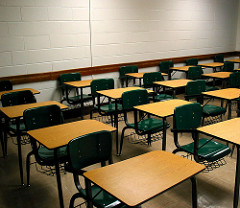 Traveling from Rainier Beach to Ballard through the Central District and Queen Anne feels more like passing through four cities rather than through four pockets of the same one. Each neighborhood contributes to what we call Seattle, but there are stark, invisible lines demarcating one place from another.
Traveling from Rainier Beach to Ballard through the Central District and Queen Anne feels more like passing through four cities rather than through four pockets of the same one. Each neighborhood contributes to what we call Seattle, but there are stark, invisible lines demarcating one place from another.
Seattle is still one of the whitest cities in the country, but it’s also one of the most segregated. Housing restrictions that once kept people of color out of wealthy, white neighborhoods (Queen Anne, Capitol Hill, Magnolia, Madison Park, and most of North Seattle) are no longer written into law, but the neighborhoods still reflect that past. According to 2016 census data, North Seattle is 69 percent white, while south of the Ship Canal is 72 percent people of color.
Seattle’s white population has historically enjoyed preferential access to public resources, a legacy that affects Seattle Public Schools. Although busing was an imperfect solution to Seattle’s racial opportunity gaps, it did increase equity in educational achievement.
From the late 1970s to the mid-2000s, Seattle, like many school districts across the country, bused students to encourage racial integration and to counteract widening opportunity gaps. At its peak in 1988, the achievement gap between black and white students had fallen to 18 points, down from 40 points in 1971. Students of color were more likely to enroll in college and less likely to drop out of high school. White students gained exposure to diverse groups and confidence navigating cultural differences.
Today, in a post-busing Seattle, most students attend schools close to home and are unlikely to encounter much diversity in the classroom. In 2016, only 30 percent of Seattle Public Schools taught 80 percent of Seattle’s students of color. Simultaneously, schools in North Seattle had little as 0.5 percent students of color in their gifted programs.
Seattle’s return to segregated learning has had a negative effect on student achievement. Seattle has the fifth biggest achievement gap in the state between black and white students. White students currently score 2.5 grade levels higher than black students, and 2 grade levels higher than Hispanic students. Accelerated learning programs such as the Highly Capable Cohort, whose participants are selected through teacher referrals and subsequent testing, continue to favor white students. In 2016, 13 percent of program participants were Asian, 6 percent Hispanic, 5 percent Native American, and only 2 percent black.
Without equal access to quality public education, students of color are less likely to match the achievements of their white counterparts. Along with Seattle’s skyrocketing cost of living, this pattern creates a city that grows farther out of reach for people of color.
More To Read
April 4, 2024
Is There a Valid Argument Against Cost-Free College in Washington?
Cost-free college is a meaningful investment that would change lives. What's stopping Washington from making it happen?
December 19, 2023
2024 Legislative Priorities
By strengthening the core pillars of our economy – including child care, health care, educational opportunity, economic security, and our public revenue system – we can diminish economic, racial, and gender inequity.
December 15, 2022
2023 Legislative Agenda
By strengthening the core pillars of our economy – including child care, health care, educational opportunity, economic security, and our public revenue system – we can diminish economic, racial, and gender inequity.
